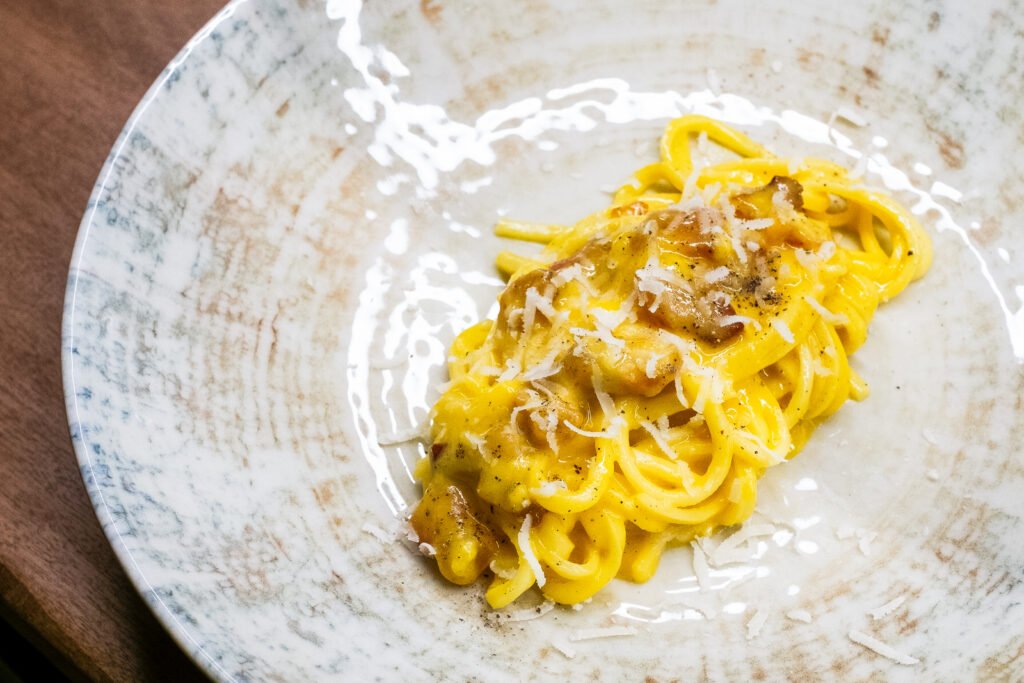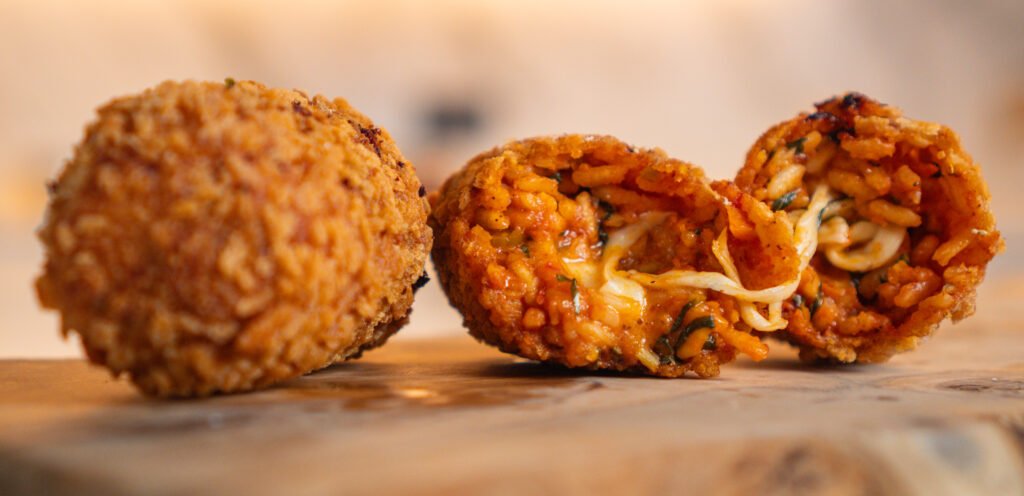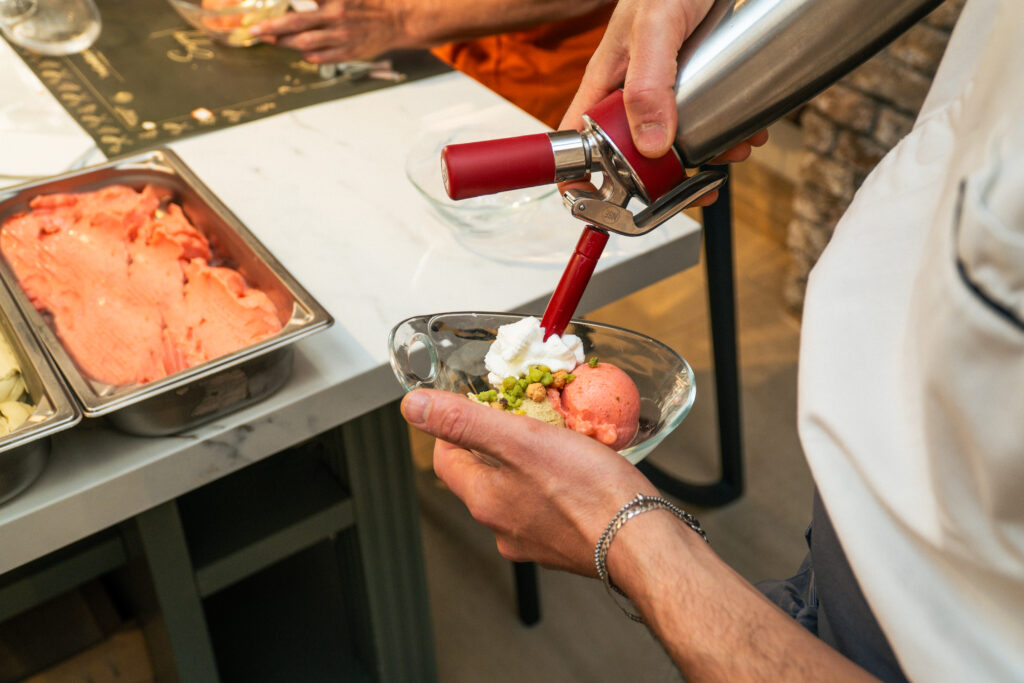When we think of Italy, many emotions come to mind. For many people, though, Italian cuisine remains top of the list. Even people who have never set foot on the continent, never mind Italy, know of famous Italian dishes. Among the many foods eaten by Italians, though, it would be fair to say that the pasta rules supreme. Just about every pasta dish you are likely to try will have its foundations in Italian culture. As a diverse nation, though, Italy has many culinary cultures.
So what about Rome?
The Italian capital boasts some of the most interesting eating options in the country. While others might swear by food found in the regions of Tuscany, Lombardy, or further south in Campagna, Rome remains a key part of Italian culinary culture. The same is true of pasta – many great pasta dishes originate from Roman kitchens. What pasta is Rome known for? Many dishes, in fact. If you choose to take a trip to the Italian capital, you will find many interesting forms of pasta waiting for you to try.
Like much of Italian culinary culture, many dishes originated in Rome but can be found across the country—even the continent and beyond, given that Italian foods remain some of the most popular globally. If you visit Rome, though, you are trying the “real thing” when it comes to certain pasta dishes. With that in mind, what pastas are most famous when you come to Rome?
The Most Popular Roman Pastas
While many Roman restaurants have their specialities, they must also make sure that they serve ‘the classics’ on their menu. What makes most Roman pasta special is their combination of two vital ingredients: pecorino romano cheese and guanciale – a form of cured pork jowl.
With so many great dishes to try out when visiting Rome, we appreciate how tough it can be to make a choice. To help you make the next meal you eat in Rome easier to decide upon, let us give you a clear idea of what pasta Rome is most recognised for. While you can find what feels like countless numbers of pasta dishes in Rome, four stand out as ‘pillar’ pasta dishes within the Eternal City, including:
Cacio e Pepe
The Roman pasta dish of cacio e pepe is what many refer to as ‘the foundation’ – an essential Italian dish. The joy of cacio e pepe comes from its incredible simplicity. Sheep’s milk cheese remains the de facto key ingredient, though some prefer to use parmesan cheese instead. Essentially, the name breaks down to ‘cheese and pepper’ – what could go wrong with such a winning combination?
➡️ Become the champion of the kitchen with EnjoyCooking’s Cacio e Pepe Recipe
While the ingredients of this Roman pasta dish remain incredibly simple, the techniques used in its creation stand out. Using the pasta water and the cheese together in a thorough mixing process differentiates cacio e pepe pasta from other dishes. The sauce needs to be very specifically made; otherwise, it will fail to lack the same splendour and class as the dish should.
Globbing is the enemy of any pasta dish, and that is the same with this. Creating a paste-like texture with the grated cheese and cold water is essential to ensuring that this pasta dish does not become too extensive. When made correctly, though, this Roman pasta dish is the definition of rich, creamy, and enjoyable. Practice is required to get it right, but those who do often settle for nothing else as their pasta comfort food.
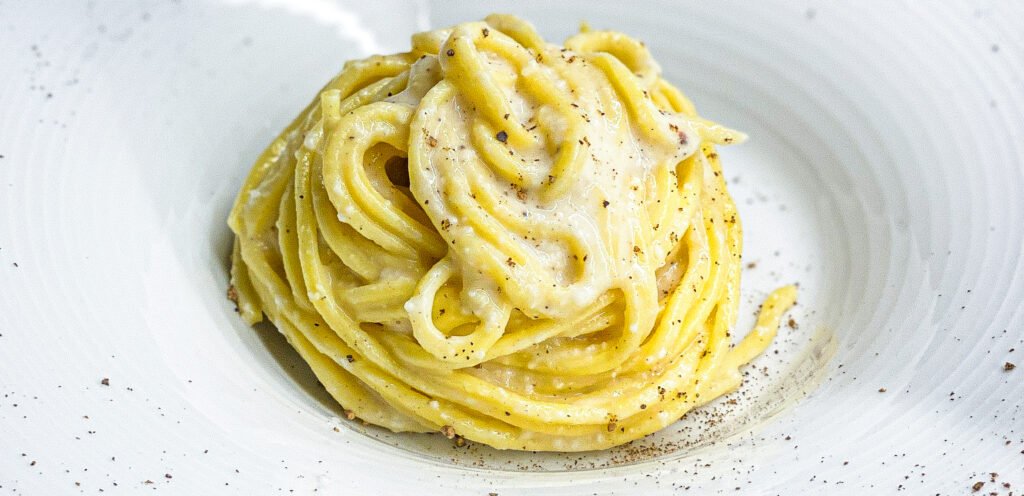
Carbonara
Arguably the most famous pasta dish of all, carbonara pasta remains the winner for most Italian and Roman-inspired restaurants. However, if you love carbonara from outside of the country itself, you might be surprised at what comes out on your plate in a Roman restaurant. You see, carbonara eaten elsewhere is quite different from what you get in the glorious capital of Italy. If you have seen an Italian eat carbonara outside of Italy, the difference explains their often negative reaction!
➡️ Check out EnjoyCooking’s Carbonara Recipe
Most carbonara dishes tried outside of Italy are overly creamy, at least by Italian choices. They also often contain ingredients that an Italian would not use, such as garlic and ham. Peas are also a no-no for a traditional Roman carbonara. What makes the Roman carbonara so unique is how simple it is. Just four ingredients go into its creation: eggs, pecorino cheese, guanciale, and black pepper. The cream is seen almost as an insult to a classic Roman carbonara, but that creaminess is what most know.
The type of pasta matters a great deal, as well. While many use spaghetti (hence why most of us know the dish as spaghetti alla carbonara), in Rome, they mostly use rigatoni pasta instead. That is because the thicker, tube-shaped nature of rigatoni makes it ideal for containing guanciale.
While the history of carbonara dishes remains disputed about how they came to be, what is undisputed is the importance of this dish to Roman cuisine. If you have never tried ‘real’ carbonara, make a point of doing so. The difference is incredible. While some might prefer what they know in the creamy version found abroad, Roman and Italian carbonara are distinctively different.

Amatriciana
While carbonara is arguably the most famous cheese-based pasta dish, amatriciana sits atop the pile of Roman tomato-based pasta dishes. Created in the town of Amatrice, amatriciana now remains one of the most important traditional Italian pasta dishes. Like most other Roman pasta dishes, amatriciana comes from the provincial areas of Lazio yet remains a staple within the capital.
➡️ Amaze friends and family with EnjoyCooking’s Amatriciana Recipe
Like many great Italian culinary recipes, amatriciana uses guanciale fat in the mixture. Guanciale is mixed with tomatoes, red chilli, and a cheese such as pecorino romano. The joy of amatriciana comes from the balance; the savoury punch of the guanciale combines in tandem with the sweetness of the tomatoes. The chilli then adds an extra kick missing from other dishes.
The use of grated pecorino also adds a bit of extra creamy flavouring to your amatriciana. The major difference between amatriciana in Rome and amatriciana found elsewhere is in the choice of pasta used. While many use spaghetti with amatriciana, Romans tend to use bucatini pasta instead. Rigatoni also remains a popular choice, but if you want ‘true’ amatriciana, try it with bucatini instead.
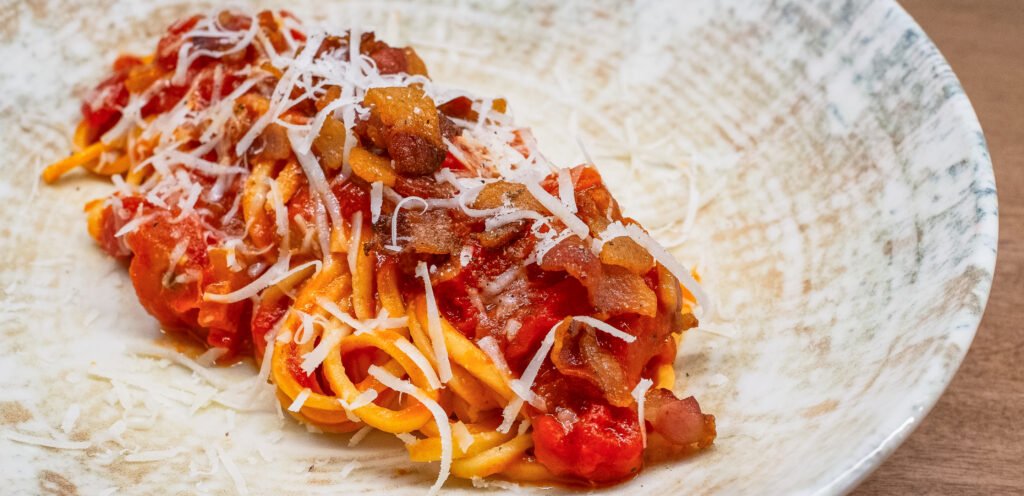
Gricia
Little-known in many cultures that claim to ‘love’ pasta, especially in the UK and USA, gricia is a highly enjoyable pasta dish. Very similar to cacio e pepe, gricia adds some extra to the ingredients that transform it. The secret ingredient to transform your pasta dish into gricia is the inclusion of guanciale (pork jowl). By including that form of fat in your sauce, you make something unique.
For many, gricia is the best of both a carbonara and a cacio e pepe pasta dish. We find it intriguing how so few people know of gricia relative to the other dishes on this list. However, it is the combination of what makes the other three so special. Some people might know gricia as the ‘white amatriciana’—and it is often seen as the predecessor to all amatriciana pasta dishes.
Served with rigatoni or spaghetti, gricia is a Roman favourite. Add some black pepper and the creamy sauce made with pasta water, and you get closer to the true gricia. The dish hails from the small town of Grisciano and now remains a staple within Italian culinary culture. If you are looking for a pasta dish that feels like a ‘best of all worlds’ combination of the above, start here.
Ready To Find Out For Yourself?
Rome boasts plenty of famous pasta dishes that stand out a mile away. The four dishes we have listed above remain supreme in terms of Italian culinary culture and are the main pasta recipes Rome is known for. If you are keen to try out Roman food, make sure to check out our cooking classes.
We’ll welcome you to one of our two stunning venues, one right by the Colosseum, the other in the Jewish Ghetto right in the heart of the historic center. Here you can learn to master Italian cuisine making pasta, ravioli and tiramisù, or even combine your cooking class and wine pairing with a farmers’ market visit.
If you’re looking for something extra special, why not treat yourself to our private premium cooking class. After all — when in Rome!










 Back
Back